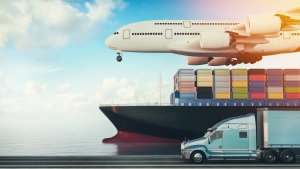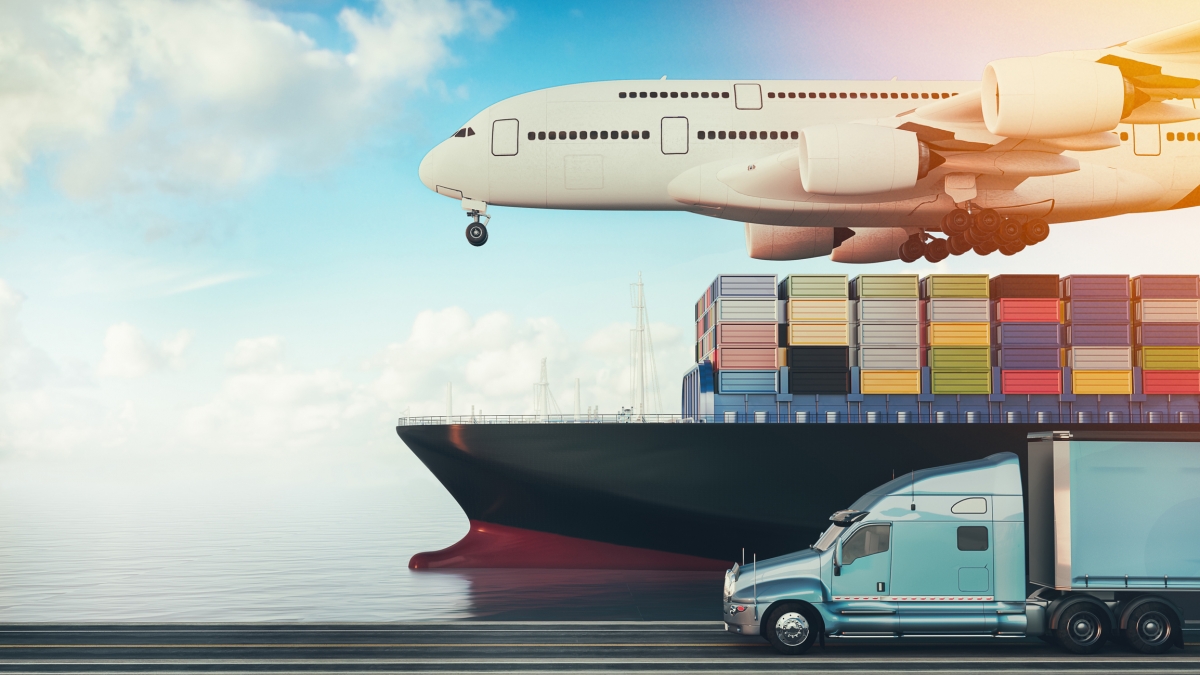
From natural disasters to pandemics, freight plays a critical role in delivering supplies that can quite literally save lives. As we find ourselves amid a heavy hurricane season and in the crosshairs of a prolonged global pandemic, the importance of emergency supply distribution is resonating more and more with the general public. Another element to this, though, is the actual transportation of emergency goods — in other words, the who, what, when, where, and how these goods get delivered in the most efficient way possible.
Planes, trains, and automobiles: All forms of freight connect in an emergency
From ocean to air to truckload freight, these diverse modes of transportation often work in unison to deliver essential aid to people in need across the world. Whether that aid takes a tri-transport journey across the globe to reach people in remote areas with limited port availability or the assistance comes from a distribution center several cities over, efficiency is vital.
Recent research conducted by the American Trucking Associations has underlined that the U.S. economy alone relies on trucks to deliver ten billion tons of commodities every year, which is about 80% of all freight transported in the U.S. While these findings signify how vital trucks are to emergency aid delivery, each sub-segment of freight serves a unique and important purpose. Air freight can expedite the delivery of supplies, ocean freight can transport a literal boat-load of goods, and truckload freight can distribute those essential items to people.
While this may seem like an apparent game of connect-the-dots, there’s more to it. In the U.S., research conducted by leading economists shows that the country has been becoming increasingly more reliant on emergency product supplies, such as medical equipment, from other countries. These findings most signify how imperative the relationship between international and domestic freight is in times of national and global emergencies. Without these connecting pieces, many necessary supplies may not reach the people who most need them in time.
Consumer behavior informs emergency transport
There has perhaps never been a more relevant example of panic buying than the toilet paper purge of spring 2020. While somewhat comical in retrospect, this consumer behavior points to the serious reality of buyer’s psychology and how significant imbalances in supply and demand can affect emergency transport overall.
During a hurricane, for example, water, powdered milk, and canned foods typically disappear within a day. Under normal circumstances, these items are stocked to last several days. When they go off of shelves at unprecedented rates, this impacts freight directly and continues to do so the longer and more widespread the disaster is.
The role that government plays in distribution
In the U.S., one should look no further than the Federal Emergency Management Agency (FEMA) for a thorough example of how government and freight connect during national disasters. Providers of air, maritime, rail, and truckload freight may register to become FEMA-approved so that the government body may utilize these companies’ services in times of emergency.
Fleets transporting these FEMA loads are not met with a simple drive, distribute, and repeat process. Often, demand for trucks is higher during times of domestic or international crises, and government and nonprofit agencies aim to be strategic about the way these items are distributed. One way an agency like FEMA may approach this is to designate a distribution center that is within a safe radius from the delivery site. Maintaining proximity in a central safe space is especially imperative in the aftermath of a natural disaster when cell phone service and road safety near affected areas are both compromised. Distribution needs to happen in a timely and efficient manner and not at the expense of further devastation to essential supplies.
Recent testimonies have also highlighted how government officials interact with FEMA and how this relationship impacts fleet professionals. One testimony emphasized how all decisions required the coordination and approval of many local, state, and federal officials before actual distribution took place.
The Federal Motor Carrier Safety Administration (FMCSA) is another government body that serves as a prime model in times of emergency. The current COVID-19 Hours of Service (HOS) Emergency Declaration that has suspended federal HOS regulations for trucks directly engaged in COVID-19 emergency relief is another leading example of how the government can interject on local, state, and national levels to facilitate the distribution of emergency aid. While these examples pertain to the U.S., you can find similar comparisons across the globe.
Running an effective emergency-distribution operation
Whether you’re a business carrying FEMA loads or you operate a nonprofit conglomerate responsible for transporting emergency supplies across the country, you can effectively deliver emergency supplies with the right solutions at your disposal. As emergencies are seldom planned, your goal should be to plan on the go. A robust, day-to-day route optimization solution can provide you with the flexibility your operation needs so that you’re always able to guide and direct drivers toward the quickest and most efficient routes. You can also use the historical data you gain along the way to continue informing and enhancing your route operation. This can prove especially handy during hurricane season, when you may be making multiple trips to similar regions impacted by regular hurricanes.
You are also going to want to ensure your teams are as connected as possible. Prioritizing dispatching is not only convenient for drivers — it’s safe. As we alluded to earlier, it’s easy for drivers to get stuck in the crosshairs of disaster-related hazards, like damaged roads and flooding. Streamlining communication between drivers and the back-office in near real-time can help drivers stay on the right, safe path. In an emergency, there is much chaos to be found. Your teams should be as connected as possible amid the disconnect.
For more emergency preparedness and informative reading, check out our recent blog post on five essential tips for truckers this hurricane season.

